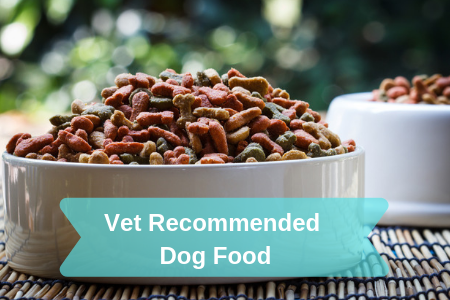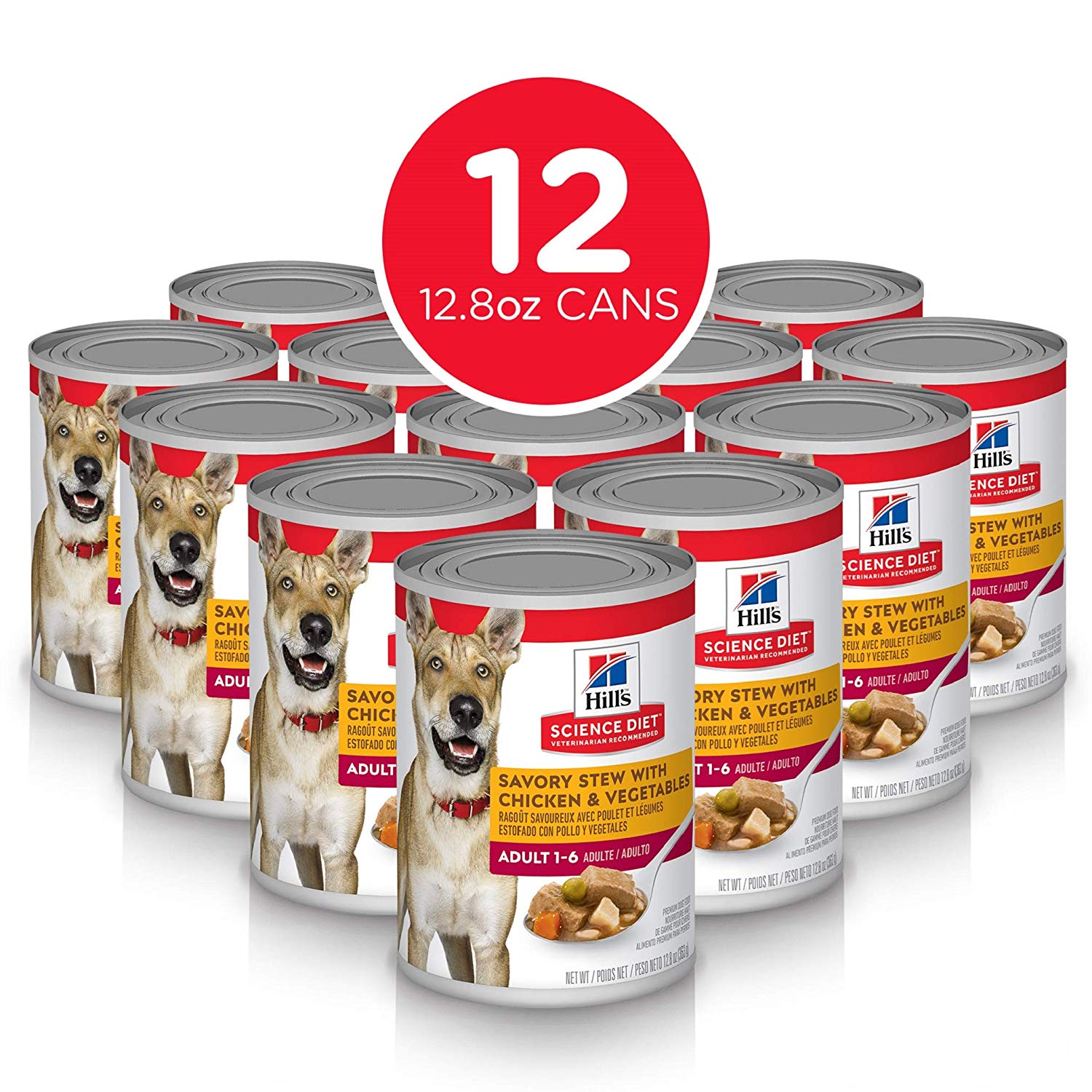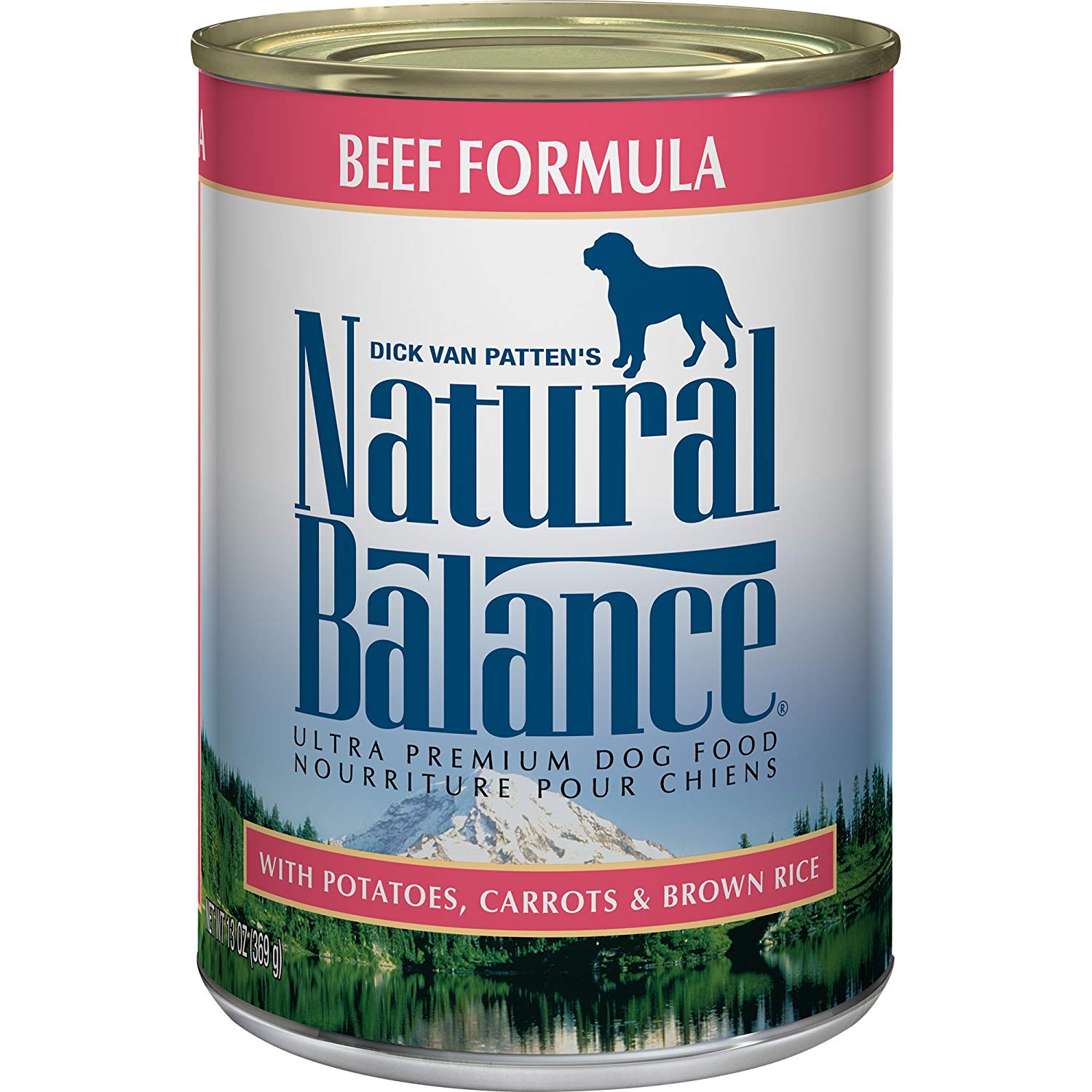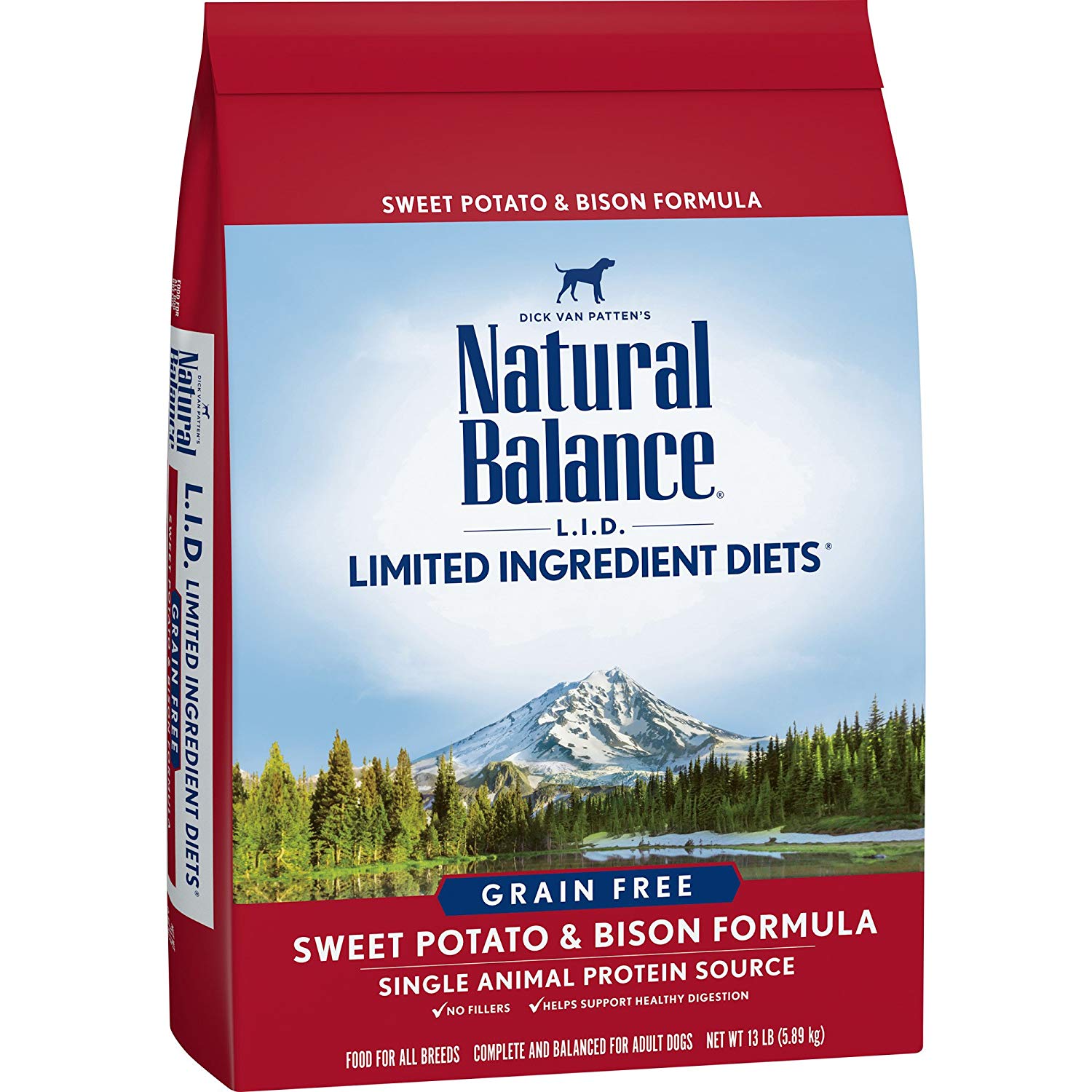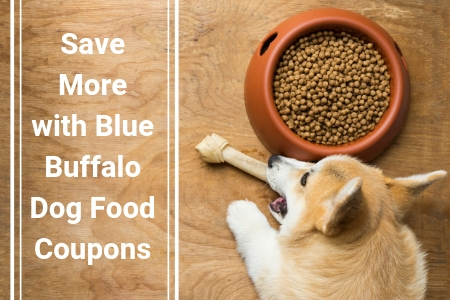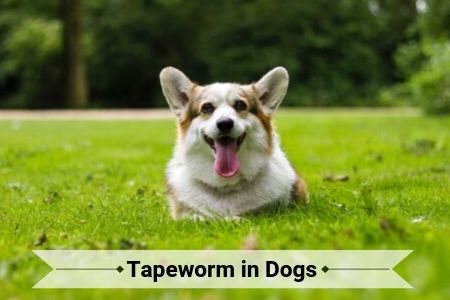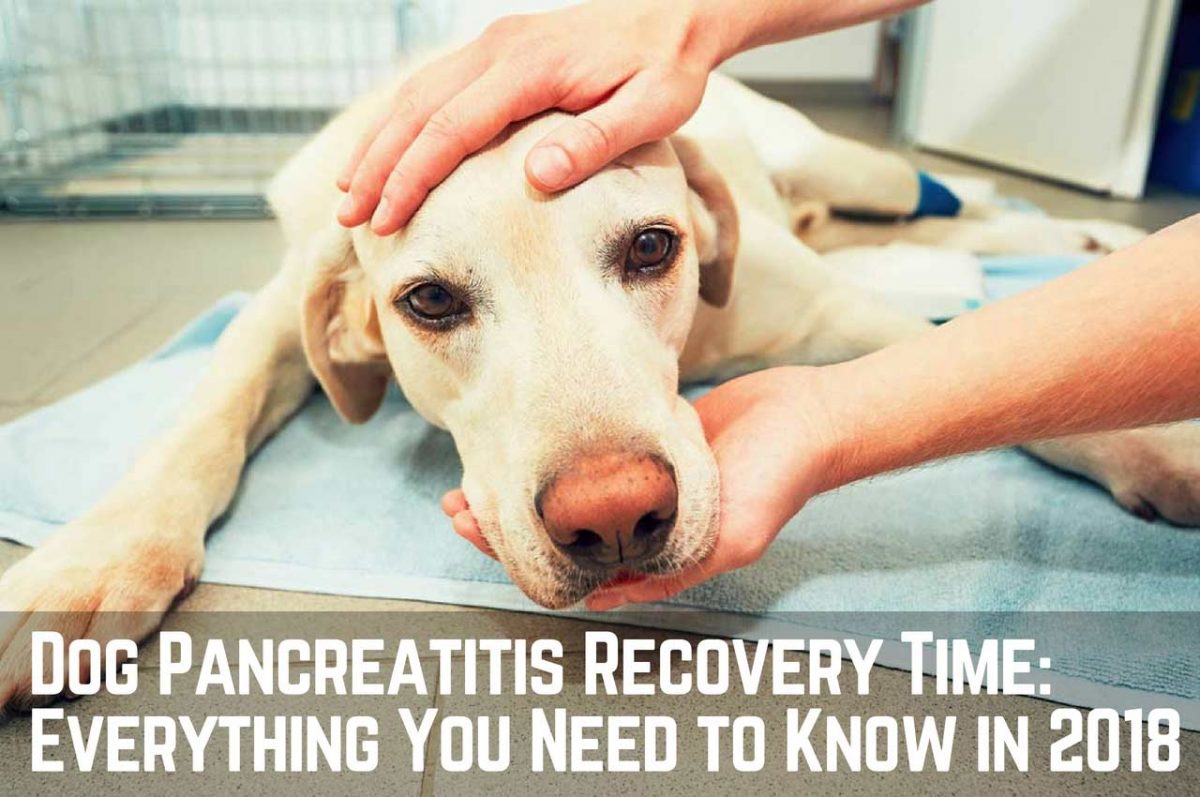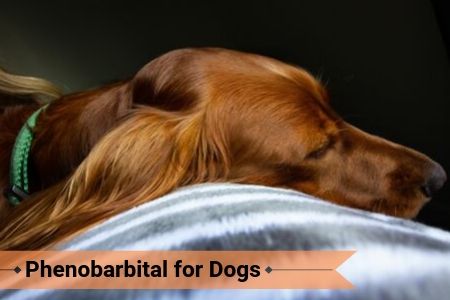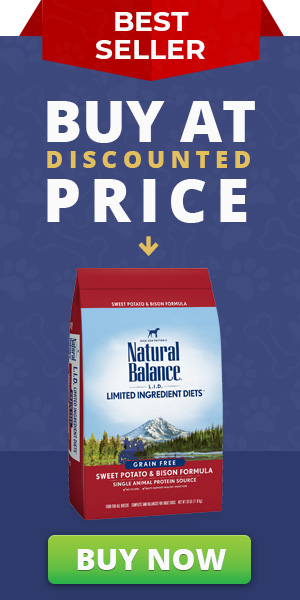Owning a dog comes with a lot of responsibility from ensuring it’s well-groomed to keeping it well fed. Contrary to popular belief dogs don’t just survive on leftovers food and bones from family dinners - or at least they shouldn’t. Sure, the occasional snack will do but careful thought and planning must go into each meal if you expect a strong & healthy dog.
Just like human beings, our dogs also need specific nutrients to aid in their growth and development. So, what better way than to feed them food recommended by those who know what’s best for them? The vets.
Our Recommendation: Best Vet Recommended Dog Foods
Product Image | Product Name | Customer Reviews | |
|---|---|---|---|
Natural Balance LID Sweet Potato & Bison Dry Dog Food | |||
Nulo Freestyle Freeze Dried Raw Duck Dog Food | |||
Grandma Lucy’s Dog Artisan Dog Food | |||
Caru Dog Stew Grass Fed Beef Bone Broth | |||
Natural Balance Chicken Formula Dog Food Roll | |||
Caru Dog Stew Real Chicken |
Do Veterinarians Think All Dog Foods the Same?
Before we go any further, let’s be clear: dog food is not a one-size-fits-all industry. Different breeds have specific needs with regards to nutrition and recipes. So, before changing your dog’s diet, we highly recommend you check with your vet first to avoid problems.
As a general rule of thumb, most canines tend to thrive on dog food brands which contain meat because they’re rich in protein and fat.
Also, if you can invest in foods with human-grade ingredients and are completely natural, the more the better. Try to consider a holistic approach when picking your dog’s food to incorporate all the necessary nutrients into their diet.
The five main nutrients to be included in the recipes are as follows:
What Determines the Dog Food You Pick?
As mentioned earlier, the exact nutrition your dog needs will ultimately depend on a couple of variables. We’ll briefly mention them below.
Life Stage
It’s no secret how our nutritional needs change depending on our stage in life - the same goes for your four-legged buddies. Below, are the different stages and the recommended foods:
- Pregnant Dogs: A reproducing dog will naturally need more food as the pregnancy progresses—particularly those rich in protein. Not only is it easier to digest but it’ll provide the right amounts of amino acids needed by the growing pups.
- Lactating Dogs: When the dog gives birth, the food intake will actually increase further. A diet rich in animal protein and fat is ideal as it stimulates & increases milk production.
- Older Dogs: Older dogs are more likely to get overweight. However, this may not necessarily be due to overeating but a slowing down in the metabolism process because of age. To aid in their digestive systems, it’s best to give them foods rich in fiber. Generally, dogs aged over five years will burn fewer calories per day. As a result, they’ll require a lower calorie intake.
Breed
Your dog’s breed will determine the food you select. Some breeds are generally more active than others meaning they’ll use more energy. The less active breeds such as the bulldog won’t need as many calories.
Also note that some breeds are unfortunately genetically predisposed to become overweight over time. As they don’t get balanced nutrition. A few examples include the following breeds:
- Terrier
- Spaniels
- Labradors
- Beagles
Food Sensitivities & Allergies
Unfortunately, some dogs may be affected negatively by the foods they eat, even natural dog food. Most pet owners might then conclude that their dogs are allergic to certain foods, which isn’t always the case. Sometimes, the dog has food sensitivities. Of course, there’s also a difference between food allergies and food sensitivity.
What you must be clear about is the difference between the two before you pick certain foods. We’ll differentiate the two below.
Food Allergy
What you must know is there are generally fewer cases of food allergies in dogs than food sensitivities. With allergies, your adult dogs will experience an immediate immunological response when they eat certain foods.
Anaphylactic shock is one such example of a rapid response after ingesting these allergens present in certain foods for instance peanuts. This reaction is normally as a result of shock or hypotension.
However, not all reactions are as severe. Mild reactions also occur if your dog eats certain foods for instance:
- Hives
- Facial swelling
- Itchiness
- Acute vomiting
- Diarrhea
Food Sensitivity
In the case of food sensitivity, also known as intolerance, the condition is more chronic, and the reactions don’t involve an immunological response. Though rarely life-threatening, eating certain foods will negatively impact your dog’s well-being and overall health. Examples of food sensitivities include the following signs:
- Diarrhea with or without vomiting
- Unhealthy looking coat which can be either itchy or dull
- Recurring ear and foot infections which can be either caused by yeast or bacteria
Bottom line: Whether your dog suffers from any one of the two conditions mentioned above, it’s best to consult with your vet first to identify the cause. Only then can you get a proper feeding plan for your dog free of foods not beneficial for it.
Meeting AAFCO Standards for Balanced Nutrition
The American Association of Feed Control Officials (AAFCO) isn't a government regulatory agency; however, they are a voluntary quality standard group that sets nutritional standards for each stage in your pet's life.
Commercial dog food companies market their food for specific stages in your dog's life including puppy, adult, and senior life stages. To choose the best dog food, it is recommended that you base your choice on the standards of the AAFCO as well as the FDA's recommendations; it is a good sign of quality when the dog food you choose meets these AAFCO requirements and standards.
What About Canned Dog Food?
In some ways, you may find that canned dog food is just as good if not better than some kibble. Canned dog food often contains more meat protein than their dry dog food counterparts. They are also often made with far fewer carbohydrates as well and contain no synthetic preservatives due to their air-tight packaging.
Canned dog food is an often-overlooked food option, but it can also be used to supplement any of the dry dog food formulas we list below in the top best vet recommended dog foods. Canned food may be more appetizing, contain fewer chemical additives, it is easier to chew, more filling, has a longer shelf life, and is higher in meat protein and natural fats.
Hill's Science Diet Wet Dog Food
This is one of the most recommended brands of wet food for dogs because of the high-quality ingredients used and how it can provide complete nutrition for your dog. It is made with high-quality protein that helps your dog build and maintain lean muscles and its ingredients are easily digestible.
It is veterinarian recommended, provides nutrition that supports a healthy coat, skin, and stool, and has a taste and flavor that your dog will find irresistible.
Natural Balance Ultra-Premium Canned Dog Food
This canned dog food also only uses the best and most high-quality ingredients and provides balanced levels of protein, vegetables, and easily digestible carbohydrates. This particular formula allows for optimal absorption of all of its nutrients which help keep your dog healthy.
There is also a good amount of Omega-6 and Omega-3. These nutrients help promote a shiny coat and healthy skin. This canned dog food was also formulated for all dog breeds as well as all of their different life stages.
Pros
- Maintains muscle health
- Highly digestible carbohydrates
- Safety tested
- No artificial colors or flavors
Cons
- It is not grain-free
- Have to use a can opener
Medical History
Your dog’s medical history also plays a part in determining the foods you must buy for it. We’ll categorize the most important aspects that can affect your dog’s health to help you pick the right foods.
Surgery
Has your dog undergone any surgical procedures in the past? Some procedures will impact your dog’s eating habits for instance spaying. Since this procedure is designed to prevent your dog from getting pregnant it means removing the ovaries and uterus.
This ultimately results in a decrease in the production of sex hormones which leads to a reduction in energy expenditure. The end result: increased hunger. This means your dog will want to consume large amounts of food at any given time.
Medication
Some medications—whether short-term or chronic—may drastically affect your dog’s eating patterns. A good example is a medication which contains Phenobarbital which is an anticonvulsant. Ingesting this often leads to a decrease in satiety which results in overeating.
To avoid your dog ending up overweight, there are certain foods they must consume and avoid as they adhere to a strict diet plan.
Also, if your dog’s medication contains Glucocorticoids, you’re likely to have an obese dog on your hands—if you don’t manage his diet. This kind of medication normally leads to abnormal fat deposition which causes weight gain. For this reason, you need to steer clear of foods which contain too much fat. Foods with lean protein are your best bet—plus lots of water.
Diseases
Before changing your dog’s diet, you must consider if your dog suffers from diseases that might affect their eating habits. Unfortunately, some conditions will lead to excessive weight gain such as:
- Hypothyroidism
- Insulinoma
- Hyperadrenocorticism

Factors that Determine if Your Dog Is Eating Right
Wondering how to tell if your dog is eating right? Just like humans, tracking the weight is the easiest way to determine this. Your dog can either be over or underweight—and neither is a good scenario.
Underweight
A dog that doesn’t have enough of the right amounts of food will weigh less than it should for its age. However, without even going as far as weighing it the following signs can indicate it’s malnourished:
Overweight
Ensuring your dog is well-fed doesn’t necessarily mean it must have plenty of access to food. This will just result in overeating and coupled with lack of exercise leads to excessive weight gain.
Ideally, you must be able to feel at least a layer of fat under the ribs. If you can’t feel the ribs at all it’s not necessarily a good thing. Rather it’s a clear indication that your dog is overweight. The same applies if you only feel the ribs through a thick layer of fat.
The following signs are usually indications of your dog being overweight:
To regulate this, you can try the following handy tips:
Obese
Obesity is on the extreme end of the scale where overweight is concerned. The following signs are indications of an overweight dog:
Ideal Weight
Neither of the above is best for your dog. What you want to aim for is the ideal weight which ultimately means a healthy dog. The following are positive indicators of a dog within its correct weight range:
Top-rated Vet Recommended Dog Food
Grandma Lucy formulated this dog food with you and your dog’s convenience in mind because it’ll be ready in just a couple of minutes. It’s very easy to prepare: simply add warm water, mix it, and your dog can enjoy the treat.
The ingredients used in this food are both hormone- and antibiotic-free, with the main ingredient being chicken. Though it is food meant for dogs, a treat made of ingredients you’ll recognize is always the best. Familiar ingredients include potatoes, apples, and blueberries, to mention just a few.
If your dog suffers from any food sensitivity, then this might be a good place to start. It’s also ideal for dogs that are prone to upset tummies. Because it’s rich in omega fatty acids, you can expect your dog to have a healthy & shiny looking coat if you pick this brand.
PROS
CONS
You and your dog will appreciate that this mixture is made using only human-grade ingredients making it free from any harmful foreign substances. Looking for a high protein diet? Then you might want to pick this meal made from 90% protein-containing foods. The main ingredient is beef which is both hormone- and antibiotic-free.
For your safety concerns, rest easy knowing that all beef bones used in this meal are inspected by the USDA. It’s also free from any genetically engineered ingredients as well as grain.
If you have a finicky eater on your hands, then this might be your best bet. Also, it helps that this food is prepared in small batches. Not only will your dog find it appetizing, but it also tastes and smells great—just like home-cooked food.
PROS
CONS
Does your dog suffer from any skin and coat issues? This dog food roll from Natural Balance might just be the answer to your problem. Here’s why. It’s scientifically formulated by both vets and nutritionists to provide your dog with the necessary nutrients required to improve any skin or coat conditions.
Though the primary goal of this product is to optimize your dog’s skin, the taste isn’t at all compromised. In fact, your dog is likely to enjoy this treat which has delicious flavors. Even the picky eaters are likely to enjoy this roll because it’s also highly palatable. Plus, it’s packed with essential nutrients and energy sources.
As for the pet owner, you’ll appreciate that it’s easy on the wallet. Because it’s available in large portions, not only is it economical, but it’s also a smart option as it’ll last longer.
PROS
CONS
Looking for a complete meal or snack for your dog? This product can be served as either of the two—it’s entirely up to you. If you’re not a fan of cleaning up after your dog when it’s done nibbling on its treat, then this might be the one.
Most of the ingredients present in this dog food are duck-based (approximately 82% with the remaining 18% consisting of other healthy ingredients).
This is one of the first freeze-dried foods on the market that contains a viable Probiotic. This chemical element is well known for supporting a dog’s digestive as well as the general immune system.
Regardless of your dog’s breed or life stage, this food is worth considering as it contains a high quality and complete balanced diet. Best of all, it’s pretty easy to prepare. How you serve it will be determined by your dog’s preference. You can either serve it straight out of the packet for a crunchier taste. For a softer taste, simply add warm water.
PROS
CONS
If safety is at the top of your priority list before picking a dog food, you’ll appreciate this brand which uses only FDA approved ingredients. This means the food is both processed and handled according to the standards & regulations of the FDA.
Have a dog that suffers from food allergies or is a finicky eater? You can trust this, and it’s formulated using 100% human-grade ingredients. It’s also ready to eat-straight out of the package.
Chicken is the number one ingredient in this meal. However, it also contains other key ingredients including omega 3, fatty acids, and high-quality protein. This not only means that your dog will have a healthy skin & coat but also strong muscles and a healthy heart.
You and your dog will also appreciate that the meal contains vegetables which are rich in fiber to aid in digestion.
PROS
CONS
For a natural dog food option with very few ingredients, you will definitely want to check out Natural Balance LID dry dog food. This is a grain-free, limited ingredient dry food that helps significantly minimize the number of ingredients your dog is exposed to. Bison is also a great source of protein for your dog and is rich in amino acids.
This food contains no artificial flavors, colors, or preservatives and can help maintain your dog's overall digestive health. In addition, it also helps support a shiny coat and healthy skin while offering a complete and balanced diet for all adult dogs.
PROS
CONS
Final Words
Before deciding on the final product, make sure it’s approved by your local vet and is in line with your dog’s specific needs.
Generally, there are foods you must avoid for all dogs, particularly those that contain animal by-products or gluten. Also, you might want to steer clear from foods containing artificial preservatives and flavors. These will just do more harm than good.
With that said, why not pick one of the above and start your dog’s journey towards a healthy body and mind?


